
Your face can slightly recess after wearing braces, creating a sunken, unhealthy facial appearance. Usually, this occurs because the doctor who did your braces didn’t know what he was doing and wasn’t concerned with facial aesthetics. Fixing your bite normally brings about positive facial changes.
Mewing can help fix a sunken face after you wear braces. People can also mew while they wear braces and retainers. Dermal fillers and cheekbone implants are quicker ways to fix a sunken face.
Consider one of our advanced or premium custom facial reports if you’re interested in an in-depth analysis of your smile and craniofacial development of your face.
Why Did My Face Sink After Wearing Braces?
Most people who wear braces might not have huge changes in their faces unless they had braces to fix their bite. However, sunken appearances typically happen when you get extractions then wear braces.
Most dentists will remove teeth to make more room in your mouth for your other teeth. It helps the braces quickly straighten your teeth. However, fewer teeth will mean that there are gaps. Your cheeks tend to sink because there is not enough material to push them out, creating a sunken appearance.
Since you have fewer teeth, the alveolar bone in your jaw gets resorbed because you’re not using it.
How to Fix a Sunken Face
Mewing
Mewing can help you fix a sunken face by enhancing your midface.
When you mew, you stimulate your palate, which is part of your midface. The pressure you apply to your palate with your tongue encourages your midface to move up and forward. The movement will help your cheekbones become more pronounced to correct a sunken face.
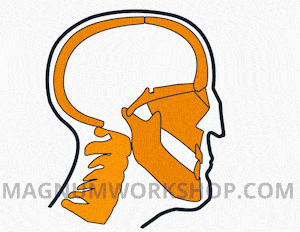
You can mew after wearing braces if you want to add more facial projection. It is also possible to mew while you wear braces.
Mewing While Wearing Braces
If you wear braces to push your teeth out, it might be OK to mew. However, if you wear braces to bring your teeth in, it will be counterproductive (and potentially dangerous) to mew.
It would be best if you used your tongue to push up and forward on your palate (without touching your teeth). You could unknowingly push your tongue against your teeth, which will delay or keep your braces from pulling your teeth inward.
Test It
Ideally, you should ask your dentist or orthodontist if you can try mewing while you wear braces. If they discourage you from mewing, you can try to mew after you wear braces.
However, you can also test it if they say it would be fine. Lift your tongue and rest it flat on your palate. Make sure you put more pressure on the back third of your palate and press up and forward.
If your tongue can comfortably rest on your palate without touching your teeth, then you should be fine. It would be best to wait until after wearing your braces if your tongue touches your teeth.

How to Mew While Wearing Braces
Mewing with braces is very similar to mewing normally. Keep your tongue resting flat on your palate without touching your teeth.
It is ideal for pushing your tongue upward and not forward, especially if your braces pull your teeth inward. Pushing the tongue upward and not forward can help you fix a sunken face without interfering with your braces.
However, you may not be able to mew at all if you have lingual braces. Unlike most braces, lingual braces are behind your teeth.
While it may keep your braces discreet, it also means that you probably cannot mew without touching the braces. If you manage to keep your tongue on your palate without touching lingual braces, you can mew.
Click here to learn more about mewing while wearing braces.
It may take you a bit longer to see results from mewing while wearing braces. Most braces will not let you expand your palate. However, you can still encourage upward facial growth with mewing.
Most importantly, do not do hard mewing with braces because you don’t want to apply hard forces against your braces. Also, do not create an intense suction hold that might push your tongue into your teeth.

How to Mew While Wearing Retainers
Most people have to wear retainers after they wear braces. It keeps their teeth from relapsing.
Most people only need to wear their retainers at night. So you can mew throughout the day and wear your retainers at night, right? Well, it is a bit more complicated than that.
Retainers keep your teeth in place. Mewing encourages your face to move up and forward, which could also push your teeth out.
Luckily, you can tweak your mewing technique to mew during the day without ruining your teeth. Similar to mewing with braces, you need to push upward. You should also be conscious of where your tongue is, especially the tip of your tongue. You do not want your tongue to push on your teeth.
Additionally, mewing expands your palate. While palatal expansion can be a good thing, it can ruin your straight teeth. When braces are in, palatal expansion is not your goal. So do not press outwards on your dental arch.
You can horizontally squish your tongue, making sure your tongue lightly touch the top of the palate:
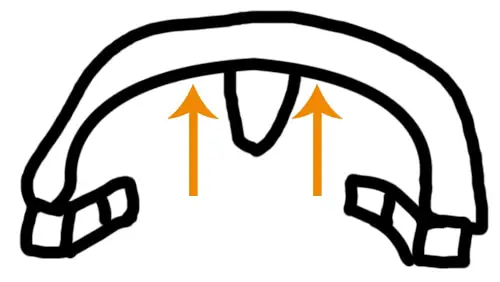
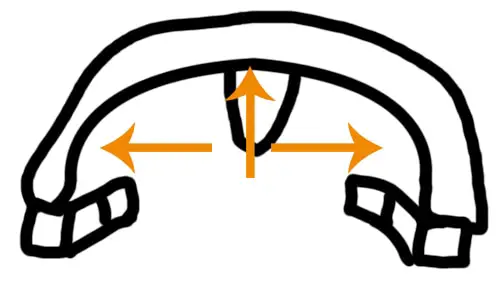
Click here to learn more about mewing with retainers.
The Retention Period
Retention is the orthodontic treatment phase after you wear braces that try to keep your teeth in place. If you skip the retention period (like wearing retainers), your teeth will likely relapse to their original positions. The retention period varies on your case. Some people may only need to wear retainers for 1-2 years, while others need to wear them for five years or longer.
You need to incorporate some form of mewing during the retention period so that your oral posture helps prevent relapse. You shouldn’t rely on the retainer to do all the work. But again, this requires doing it safely, so check out our article on mewing with retainers.
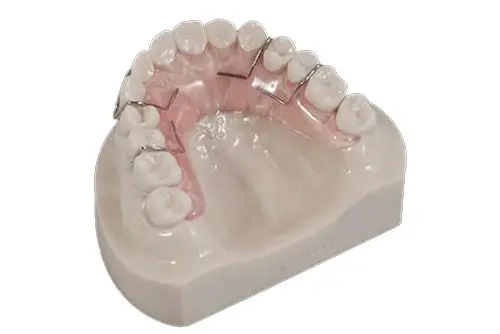
Fast Ways to Fix a Sunken Face After Braces
Dermal Fillers
If you want a faster way to add more volume to your cheeks, then you can opt for dermal fillers. A surgeon will simply inject the filler into your cheekbone area to enhance projection. The procedure is quick and often painless.
Dermal fillers consist of natural ingredients like collagen and hyaluronic acid. Your body metabolizes those materials over time, which is why most dermal fillers last for six months to two years.
It is an excellent way to add temporary facial projection until the retention period passes, so you can try mewing.
However, the downside of fillers is that they don’t hold their shape well and can migrate to other parts of the face. Sometimes pieces of filler last for years, creating unintended results.
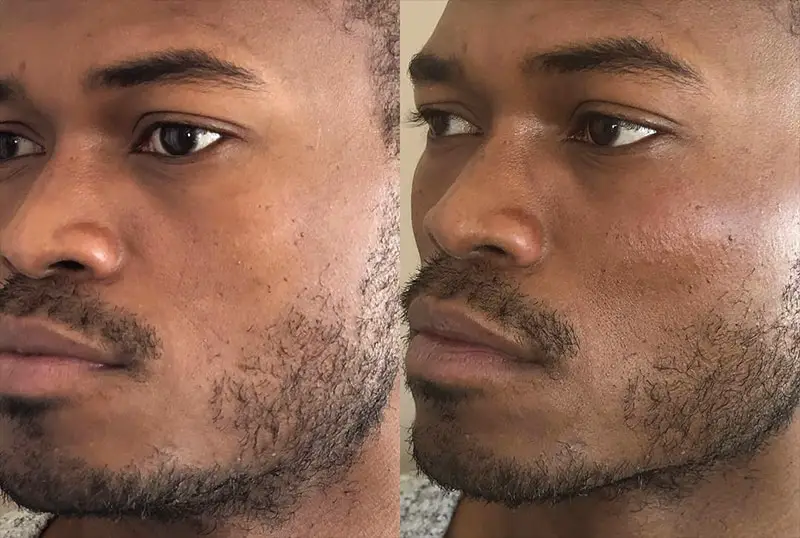
Cheek Implants
If you want a permanent solution, then cheek implants are the way to go. While the recovery time can take several weeks, you will have instant and long-lasting results.
Submalar cheek implants help you achieve fuller cheeks to repair a sunken appearance. Malar implants provide higher midface projection. People often get a combination of these implants to augment the cheeks and cheekbones.
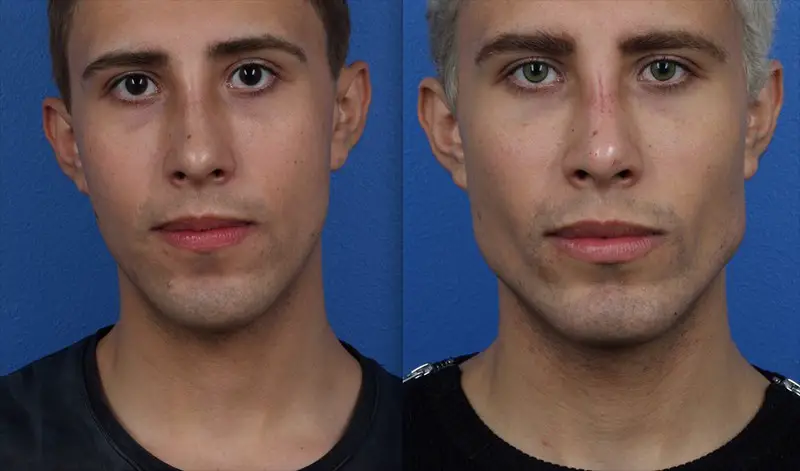
Most cheek implants last a lifetime, especially if they are screw fixated implants. While it is supposed to be permanent, you can ask a surgeon to take out your implants or change the implant size.
However, it may be ideal to continue mewing even if you get cheek implants. There is bone loss in the mandible, midface, and orbit as the face ages (Shaw et al., 2012). You can see how the cheekbones sink with age in the photo below.
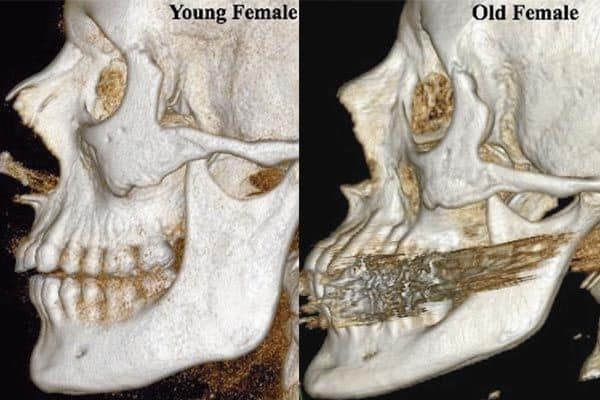
When your midface loses volume, your implants will sink back as well. That is why most older people have sunken faces. Their facial fat and skin also sag down, further emphasizing the sunken look.
Mewing will encourage your midface bones to stay high for as long as possible. You can also get dermal fillers to add extra projection as needed.

